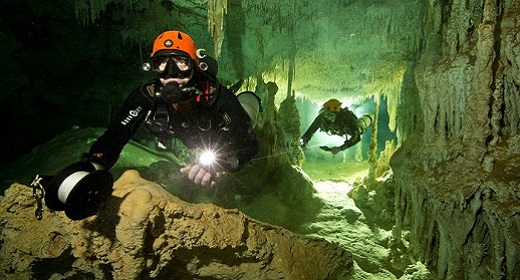by Nick Polizzi: What is Shamanism? Shrouded in mystery and often misinterpreted, shamans practice one of the oldest professions in human history…
Known as a healer / priest, shamans are capable of harnessing, at will, the invisible forces at play around and within us to aid in great healing and to gain wisdom.
In our modern world, we’ve become blind to these deeper realms of consciousness in and around us…but they still exist.
More people today are waking up to shamanism. They’re remembering our innate and intuitive connection with the cosmos and the natural world that is an unshakeable part of who we are.
And they are using this connection—this superpower—to create modern-day miracles, to heal unhealable wounds and illnesses, and to reclaim their lives.
While every shamanic culture throughout the world has its own belief system, rituals, tools and techniques and other differences, many share some central principles and elements.
Our goal in this guide is to give you a general understanding of these commonalities as we explore what is shamanism and what is shamanic healing. It’s our hope and intention that this guide will help awaken you to the world of shamans, so you can discern for yourself if this ancient healing path is right for you.
What Is Shamanism In Simple Terms?
The word shaman, šaman, is Tungusic, originating in the remote Altai Mountains of Siberia. It translates to “one who knows.”
In the traditions of Siberia, Mongolia, and parts of China, it describes an individual who bridges the physical world and the realm of spirits in order to bring balance and important wisdom to their community and to heal the sick.
While the term “shaman” isn’t used universally throughout the world, the concept is.
Around the globe, and throughout the ages, cultures that had no connection to one another often had a person (male or female) capable of moving between worlds and acting as a sort of link.
In North America, many indigenous tribes use the term, medicine man/woman. If you’re in Korea, it’s mudang (which refers to a woman). Across Indonesia, it’s dukon. P’aqo is what you might call a shaman in the Andes, while in South Africa, they’re known by the terms sangoma or inyanga.
But there is an important distinction we need to point out.
As Mircea Eliade wrote in his seminal book, Shamanism, not every medicine man, healer, magician, or other title means someone is a shaman.
Shamans have a distinct ability: they are said to possess the power to enter a trance state and travel to the spirit world to communicate with spirits, heal illness, retrieve lost souls, and receive important messages to bring back to their communities. (We’ll dive deeper into the roles and abilities of shamans in just a little bit.)
For our purpose here, we use the word, shaman, as an umbrella term—partly because it’s the term most people understand.
But we recognize that many cultures have different honorary titles and different methods and ways for practicing this ancient art—and we send our respects to those cultures.
When Did Shamanism Begin?
The history of shamanism takes us far, far, back all the way to human’s prehistory on this planet.
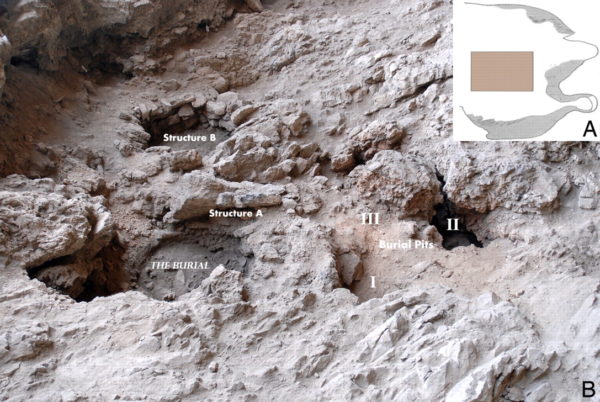
Source Attribution: https://www.pnas.org/content/105/46/17665
Archeologists have uncovered a 12,000-year-old-grave in modern day Israel that they say was an ancient shaman burial.
While in Tassil, Algeria, you can step into an ancient 5,000-year-old-cave to view a painting showing a shaman with the head of a bee and surrounded by mushrooms.
In France and Spain, cave paintings have also been discovered depicting hybrid animal-humans that many historians believe are pictures of shamans.
Where Are Shamans Found Today?
Everywhere.
You can find shamanic cultures, or types of shamanism, all around the world from Korea (Musok) to Ireland (Celtic/Druid), South Africa, Hawaii (Huna), Mongolia, Siberia, the Amazon, Peru, Mexico, Northern Europe, Zimbabwe, the continental United States, Canada, Australia, as well as Core Shamanism—a modern day shamanism founded by Michael Harner and practiced in the West.
How Are Shamans Chosen?
It’s said that no one chooses to become a shaman; they either inherit this gift at birth or receive it during an extreme life challenge or close brush with death. Many believe that shamans have an innate ability to connect to the spirit or supernatural world. In many shamanic cultures, shamans have their fates predetermined, passed down through their bloodline or by an unintended initiation, often a near death experience.
Still other shamans are said to have felt this deep sense—a knowing as if being called—that they were meant to become a shaman.
You won’t find shamanism studied in most schools. It’s an ancient tradition passed down by word of mouth from generation to generation, without any written account. And it often takes years of difficult apprenticeship to master shamanic practices and techniques.
When teaching an apprentice, a shaman not only shows them the ceremonial practices, medicinal herbs, and techniques to communicate with and reach into the spirit world, but also how to walk the sacred path in this world.
Interesting aside…some people have put forth that what we call schizophrenia is actually someone who possesses shamanic abilities.

What Religion Is Shamanism Associated With?
Shamanism isn’t a religion like Christianity, Islam, or Judaism where people believe in one central God. Nor is it like Hinduism with multiple divinities, or even Paganism which has religious undertones.
Although many cultures believe in an all-powerful Creator or Supreme Being, shamanism and animism have much more in common.
Animism is the spiritual belief that there is a spirit in all of nature. Every plant, stone, tree, animal, place, insect, person, even object—has a spirit. This belief holds that there are more realms to reality than what we can see. Shamanism shares this belief that spirits are everywhere and in everything. It goes a step further, though, to include practices that allow shamans to travel to the spirit world and communicate and enlist spirits for guidance, wisdom, and to aid in healing.
What Is The Role Of The Shaman?
Priest.
Healer.
Poet.
Psychic.
Spiritual guide.
These are the highly sought-after powers that shamans have shouldered for their communities throughout the ages.
Today, we mostly know shamans as the healer-priest, working to heal illnesses of the mind, body, heart, and soul. They offer spiritual and psychological counseling—but not as we know it in the West.
In the West, we’ve separated healing and medicine. But to shamans, it’s all connected. So the shaman seeks to understand what has happened to someone’s spirit, mind, heart, and body.
For the shaman, only by treating the entire being (including the soul) can healing take place.
What Abilities Do Shamans Have?
As we mentioned earlier, it’s believed that shamans are the living bridge between this dimension and the one we cannot see, possessing the ability to pull back the veil of reality.
As shamanism experts like Mircea Eliade, who wrote the treatise, Shamanism: Archaic Techniques of Ecstasy, have observed, shamans have the unique ability to alter their state of consciousness in order to travel to the spirit world, where they can communicate and have direct experiences with helping spirits.
Some of the more common helping spirits that a shaman may communicate with include:
- Power animals
- Spirit guides
- Guardian spirits
- The souls of deceased shamans
- The spirits of plants, natural elements, and rocks
- In some shamanic cultures, gods and demigods, and spiritual masters
- Spiritual teachers
The shaman prays to helping spirits, speaks to them, sees them, and invokes them to aid in healing or to share wisdom that will protect and keep their communities safe.
What Is Shamanic Healing?
In shamanism, any illness—whether it’s physical, emotional, or mental—may have a spiritual component that requires treating.
Cue the shaman, who will go on a shamanic journey or a soul flight.
Traveling to the realm of spirit, a shaman will seek guidance from helping spirits about how to heal their patient, or to release any internal/spiritual blocks in their patient that are the root of their illness.
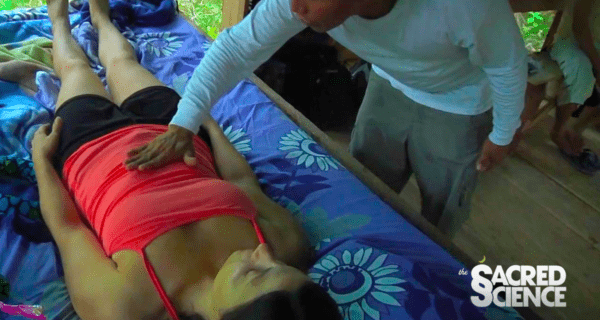
What Is Shamanic Soul Retrieval?
Sometimes, to heal their patient, a shaman must perform what’s called a soul retrieval, where the shaman travels to the spirit world to bring back a part of their patient’s lost soul.
In some shamanic cultures including Siberia, Mongolia, China, and Indonesia it’s believed that a patient can lose a part of their soul after experiencing a trauma whether that’s a one-time event or repeatedly over time. Trauma includes an emotional, physical, mental, or spiritual event that overwhelms an individual’s ability to process and cope.
When an experience becomes too intense, to protect itself a part of the soul may flee, hide, or fracture, leaving the body in the physical world and going to non-ordinary reality that’s outside our time and space.
Typically, a soul retrieval is just a part of a patient’s healing. Shamans believe that when a soul fractures and part of it flees, it leaves a hole inside of the patient, which can get filled with an illness.
Often, the shaman will treat the illness first, removing the energies that have filled in the hole before then traveling to find and return the part of the patient’s soul that was lost.
What Are Shamanic Spirit Worlds?
To answer the question “what is shamanism?” it’s vital to understand the spiritual landscape that underlies this belief system.
Just as shamans go by different titles in different parts of the world, so do the names and beliefs around the spirit world. Generally, shamans will travel between three cosmic zones—the sky, the earth, and the underworld. Some cultures believe there are different levels in each of those three zones,
Those worlds include:
- Upper World (Sky)
- Middle World (Earth)
- Lower World (Underworld)
- World Tree (also known as the Tree of Life, the Cosmic Tree)
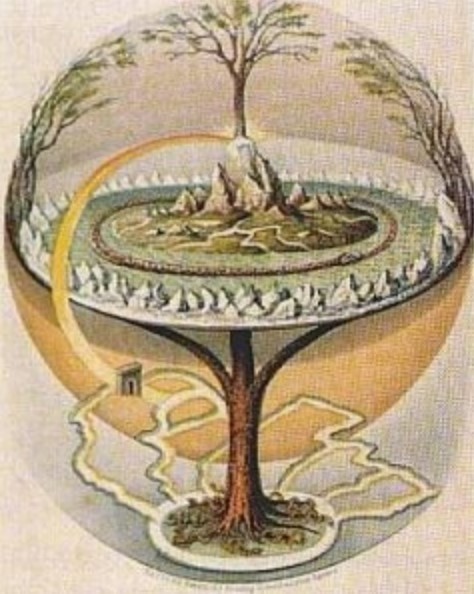
The Upper World (Sky)
The Upper World is the realm of gods, goddesses, demigods, mystical or religious figures, and spiritual teachers.. Here, shamans gain great insight into their being, and a wider and deeper perspective on an experience.
The Middle World (Earth)
The Middle World is where shamans travel to understand an event—past or present—that happened on the physical plane, or to gain information about a place. In this realm, shamans may seek to work with earth spirits—rocks, plants, and other elements found in nature.
The Lower World (Underworld)
When shamans seek to meet their power animals or guardian/protector spirits, or to gain wisdom on how to facilitate healing and personal transformation for a patient, they will journey to the Lower World.
The World Tree (also known as the Tree of Life, the Cosmic Tree)
While the Upper, Middle, and Lower Worlds are specific to regions, many shamanic cultures—from Europe to Asia, North America, Australia, Africa—share a belief in the World Tree, which connects the spirit worlds.
The World Tree has multiple meanings. It is both a gateway and path for spirits and shamans to reach the various worlds, such as the upper or lower worlds. It’s also its own place, a part of the spirit world that shamans can travel to.
Shamans often depict the image of the World Tree on their sacred objects, such as a drum or clothing, to receive power from the other worlds and lend it to the physical.
What Are Shamanic Ceremonies And Shamanic Rituals?
To go on a shamanic journey, shamans must alter their state of consciousness by going into a trance-like state. Sometimes, the shaman will induce this state in their patients, so they can access realms within themselves to aid in deep healing.
In order to alter their state of consciousness, shamans will use different tools and techniques during a ritual or ceremony.
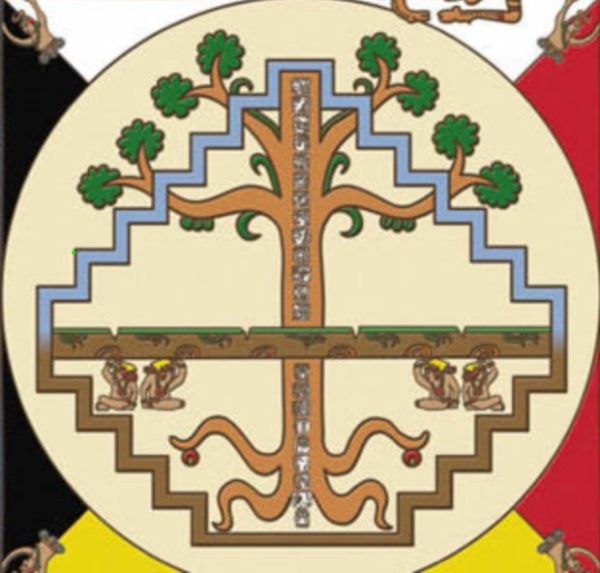
Today, shamanic healing and shamanic ceremonies have become quite common as more people turn inward to heal.
While you can certainly work one-on-one with a shaman, many also lead groups through a shamanic ceremony and shamanic ritual.
Shamanic ayahuasca ceremonies, in particular, have become quite popular—although it’s illegal in the United States but legal in parts of Central and South America.
This ancient medicinal plant from South America gets brewed into a tea and served to group participants, who drink it under the careful guidance of the shaman. The ceremony usually takes place at night and can last for hours and lead to deep inner transformation and healing.
What Do Shamans Use To Induce A Trance-Like State?
Shamans throughout the world turn to different shamanic tools and techniques to shift their state of consciousness. Often, they will use multiple ones too.
Let’s take a quick peek into some of the most common tools and techniques that shamans use to bridge our world with the world of spirits.
Plant Medicine (Including Mushroom Medicine)
When we hear about modern-day shamanic healing ceremonies, odds are plant medicine, including mushroom medicine, plays a starring role. Plants like ayahuasca, psilocybin, san pedro cactus, Fly agaric (Amanita muscaria), iboga (Tabernanthe iboga), and peyote have psychoactive properties that when ingested smash the walls of reality, altering your consciousness.
Shamans will use plant medicine and mushroom medicine themselves, or they may have their patients ingest the plants (often in the form of tea) or mushrooms. The healer remains present to guide the patient during their journey.
Shamanic cultures throughout Mexico, Central and South America, the United States, Australia, Siberia, and Africa are all known to use psychoactive plants and mushrooms to induce a trance.
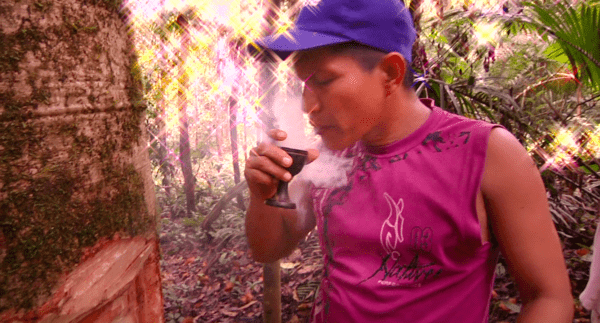
Shamanic Drumming, Rattles, And Clapping
Sometimes, it’s the sound that shepherds the shaman from this world into the unseen. For some cultures that sound comes from a constant rhythmic drumming or clapping.
Other shamanic cultures, including those of Peru, Colombia, Ecuador and certain indigenous tribes in North America turn to the continuous shaking of a rattle to guide the shaman into the world of spirits.
Shamanic Dancing
Some shamanic cultures including the San people of Botswana and Namibia (once known as Bushmen) will combine dance with drumming and chanting. It’s the intensity and repetition that come from merging these tools that transport shamans from here to there.
It was through dancing that shamans also connected to nature spirits. Shamans would dance to embody the spirit of the sun, a tree, a bird, wind, or another part of nature.
Chanting And Singing
Look at most spiritual or religious practices throughout the world and you’re likely to find some form of chanting present in them all. That’s especially true in shamanism. Shamans use ancient words and phrases to connect with the spirits and induce healing in their patients.
Extreme Temperature
If a sweat lodge popped into your mind’s eye, then you’re spot on. Extreme sweating as you will find in sweat lodge ceremonies in Mexico or throughout the United States are believed to help your body release impurities, stuck energy, and promote intense healing.
Such ceremonies often take place in the dark and in a group with the shaman initiating and guiding participants through their journeys. The shaman may also use a drum and/or chant to promote deeper healing.
Shamanic Costume
Shamanic ceremonies are sacred. They are performed with the utmost respect and reverence for the spirits. The shaman and their patient rely on these for the deep healing that is about to occur.
And it’s not a journey to be undertaken lightly.
To support what’s about to happen, the shaman wears a special ceremonial costume, that depending on the region may include feathers, clothing that represents a specific animal, bones (from animals and sometimes humans), shells, specific colors, a mask,
Everything the shaman wears has a deep symbolism that might be meant to provide protection against evil spirits, allow the shaman to take on a new, magical, animal body, and to help initiate the process where the shaman leaves this reality for the supernatural.
How to Learn More About Shamanism and Shamanic Healing
When fully harnessed, shamanic healing gives us a superpower to create miracles in our lives. But it takes courage, discipline, and a willingness to go beyond what we ever thought was possible.
So.. what is shamanism? And how can it assist you on your healing journey — to promote deep inner, personal transformation? Well, you’re in luck.
There are so many phenomenal resources and shamans today offering their gifts and knowledge to us.
10 Signs You’re a Shaman & Don’t Know It
The Best Books On Shamanism
This isn’t an exhaustive list, but here are some of the best books to start with:
- Shamanism: Archaic Techniques of Ecstasy, by Mircea Eliade. This is the book that brought shamanism to the West in 1951. It might be hard to get your hands on a copy these days, but if you want a deep dive into different shamanic cultures around the world, this is the book for you.
- The Way of the Shaman, by Michael Harner. Traditional with a modern spin and which became Core
- The Sacred Science, by Nick Polizzi. I know, I know, this is me shamelessly plugging my own book. But it is the reason why The Sacred Science website exists, and it gives you a window into shamanic healing and shamans. It was one of the most—if not the most—transformative experiences of my life.
Shamanic Healing Courses
If you’re feeling drawn to learning more about shamanic healing and how to integrate it into your everyday life, then there are incredibly gifted shamans sharing their knowledge today.
- A 7-week Shamanic Journeying Course with Sandra Ingerman
- Inner Alchemy
5 Tips To To Find The Right Shamanic Practitioner For You
Shamanism has grown in popularity in the Western-world. This is a fantastic development!
But capitalism’s reach knows no bounds. The massive influx of spiritual tourism into developing countries has mixed in the charlatans with the truly gifted, authentic shamans.
Before you dive in with a shaman, you probably want to know how to spot a real one, right?
Many of the interventions used by shamans are intense. Whether it’s a psychoactive plant brew, a piping-hot sweat lodge, or a long period of fasting. So it’s important to know if a healer is legit before putting your life in his or her hands.
The same is true for the shamans you might find where you live—they do exist everywhere, afterall!
So how do you spot a real shaman?
I wish I could say there was a secret handshake, or password, or even a one and only question that you could ask to help you to differentiate the charlatan from the shaman.
There’s not…but there are certain clues you can look for to help you find the right shaman for you.
Here are my 5 tips to guide you to connect with the right shaman and that I’ve used in my own travels to stay safe and save time.
1. Do Your Digging
A lot of healers don’t advertise, and many shamans mainly work within their families and communities—they may even have full-time jobs doing something unrelated.
So it may take a little bit of work to find the right shaman.
One of the most tried-and-true practices known to humankind is seeking recommendations from the people in our world. Start with people in your circles whom you respect, whom you feel are on the same healing journey or wavelength as you. You may be pleasantly surprised to find someone in your circle who has worked with an incredible shaman.
If you have a local bookstore with a spiritual and/or alternative healing slant in your area. If you do, they may have connections to shamans in your area—although, your mileage may vary depending on where you live.
Don’t get too here, because you can always turn to the internet.
In fact, while it was a series of synchronicities that led me to meeting Roman—the shaman who guided me and a small group of people on a journey that I chronicled in my book and documentary (of the same name), The Sacred Science—one of them was a simple internet search!
There are some amazing shamanic healers practicing right now that you can find and work with such as Sandra Ingerman and the practitioners who she’s gathered at her website Shamanic Healers (https://www.shamanicteachers.com/).
Also Michael Harner’s Foundation for Shamanic Studies (https://www.shamanism.org/) is another excellent resource to start you on your shamanic journey.
2. Conduct A Background Check
Once you have a name or two, it’s time to follow up. Dig through their website. Read any reviews that you can find. Email and/or call them and ask for a time to talk. You can also ask to speak with a former patient.
You will also find certain shamans who offer group workshops or a group healing session, which for some people may be a better fit than a one-on-one experience, or a great precursor to working more closely with them later.
Basically, you’re looking to get a sense for the shaman’s energy and whether you feel a connection and pull to work with them. (And it’s okay if you don’t! That’s a sign you need to keep looking.)
3. Beware Healers Who Need To Be Noticed
What do you imagine shamans wear or look like? If you pictured a shaman in a baseball cap, a t-shirt with a major brand logo, and a pair of cargo shorts, then you’re correct.
Shamans look a lot like everyone else these days, so beware of those people who seem to go out of their way to play up the “image of a shaman.” So anyone going out of their way to get noticed is a sign to walk the other way.
Flamboyance is at odds with the spirit path.
4. Consider Their Attitude Toward Money
Money is commonly exchanged for a shaman’s services.
But a shaman or group of shamans who insist and seem overly eager to be paid in full upfront, is often a red flag.
Most of the bona-fide healers are less concerned about the money and more interested in the right fit of a patient. If you find the right shaman, they will often negotiate payment with fees set on a sliding scale according to what the individual can afford.
5. Trust Your Gut
If a shaman comes highly recommended, they meet all your requirements, and still something just doesn’t feel right, go with your intuition. Walk away—this is true for any healer and healing modality that you try.
Because ancestral medicine is strongly spiritual, your intuition is going to be your best friend every step of the way, from getting to the root of an illness to homing in on the right maestro to guide you on your journey.
Go with your heart and who it urges you to work with, knowing that a true shaman will respect your feelings.
The Beginner’s Guide To Shamanism Conclusion
What is shamanism? Shamanism is an ancient tradition that can offer us healing and wisdom…today. I’ve benefited and have seen others experience profound healing and transformation because they turned to shamans and shamanic healing.
Use this ultimate guide as a step toward remembering where you came from, who you are, and how you can be in this world today.
Stay Curious,
Nick
Do you have experience with shamans and shamanic healing? We’d love to hear from you! What other resources, tips, and interesting insights can you share to help your fellow brothers and sisters on this path?
Source: The Sacred Science











